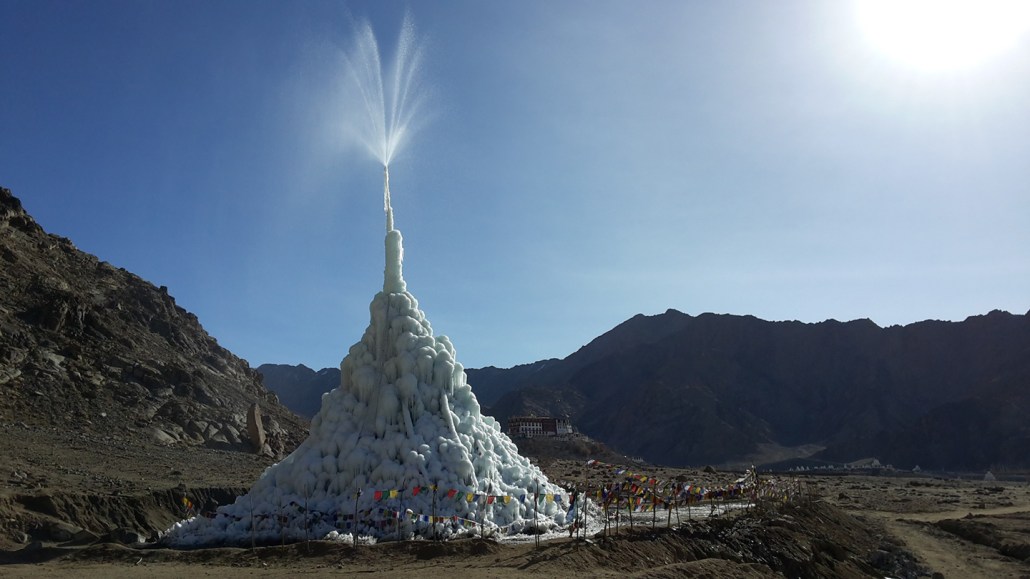How to build better ice towers for drinking water and irrigation
‘Ice stupas’ emerged in 2014 as a way to cope with shrinking glaciers in a warming world

In India’s Ladakh region, some communities living high in the mountains build fountains of water during the winter that freeze into building-sized cones of ice, known as ice stupas.
Suryanarayanan Balasubramanian/Ice Stupas Project







